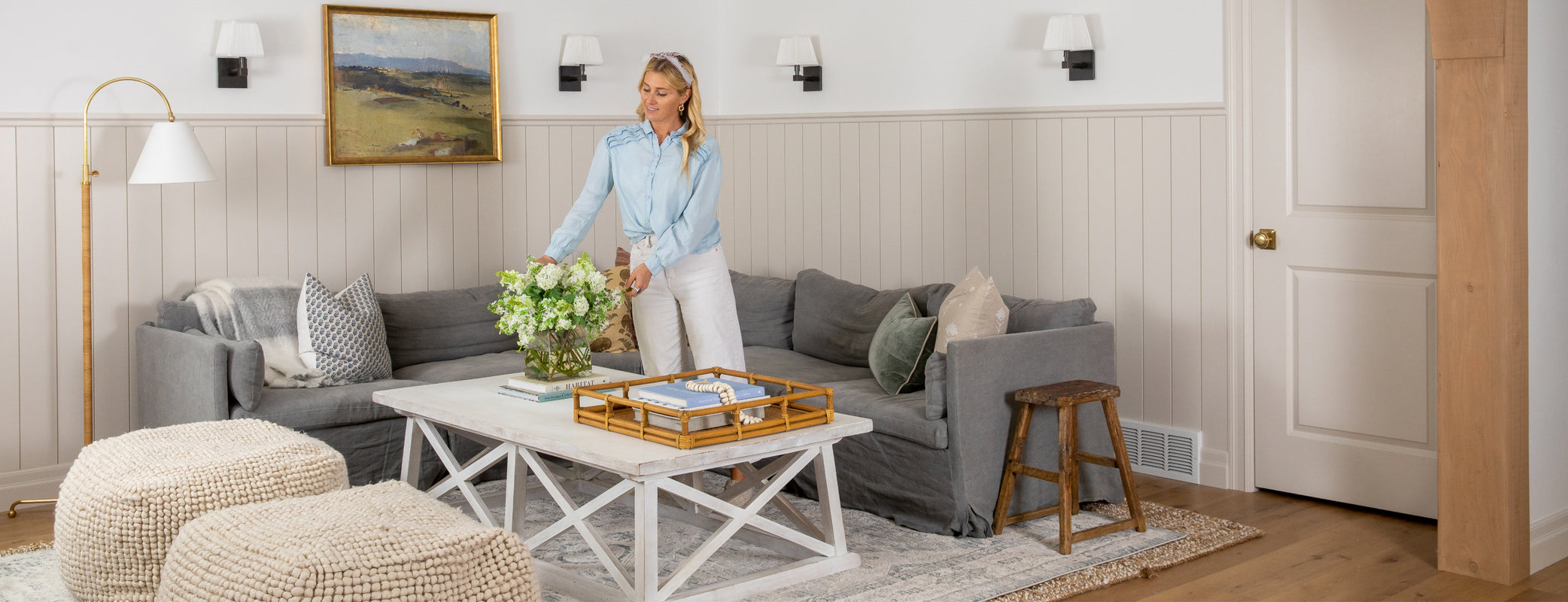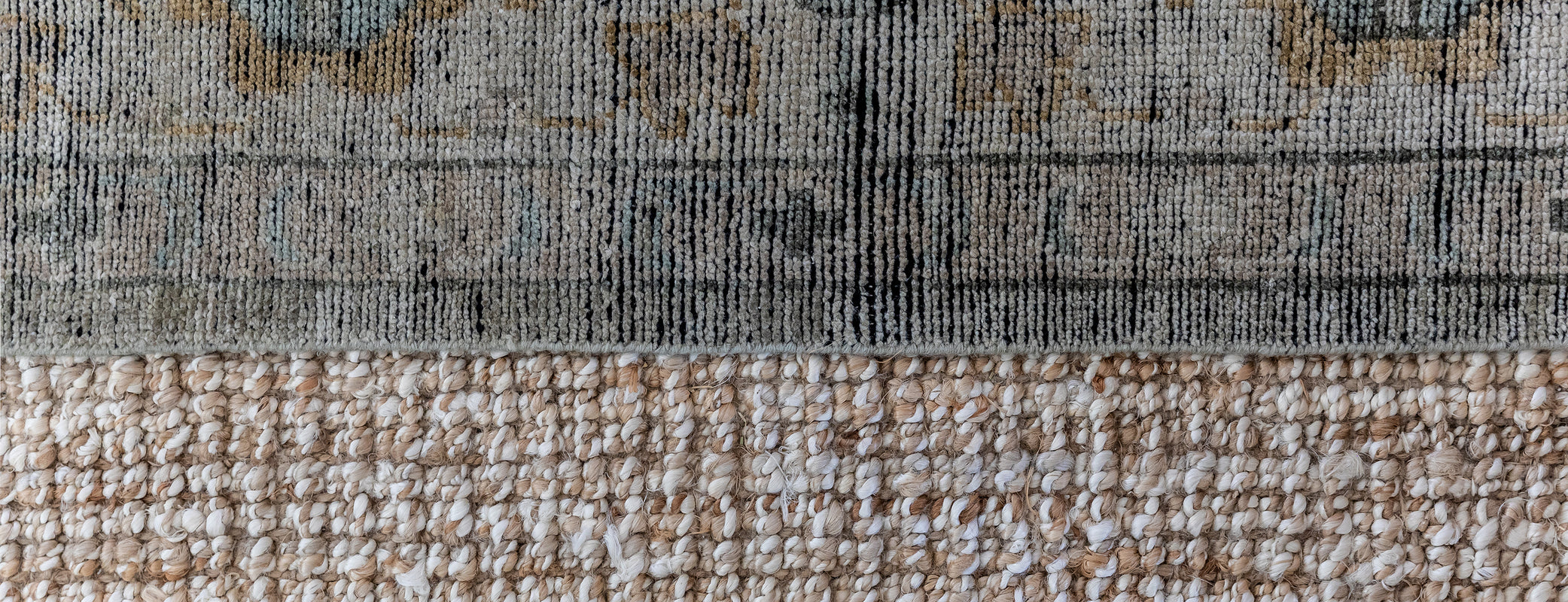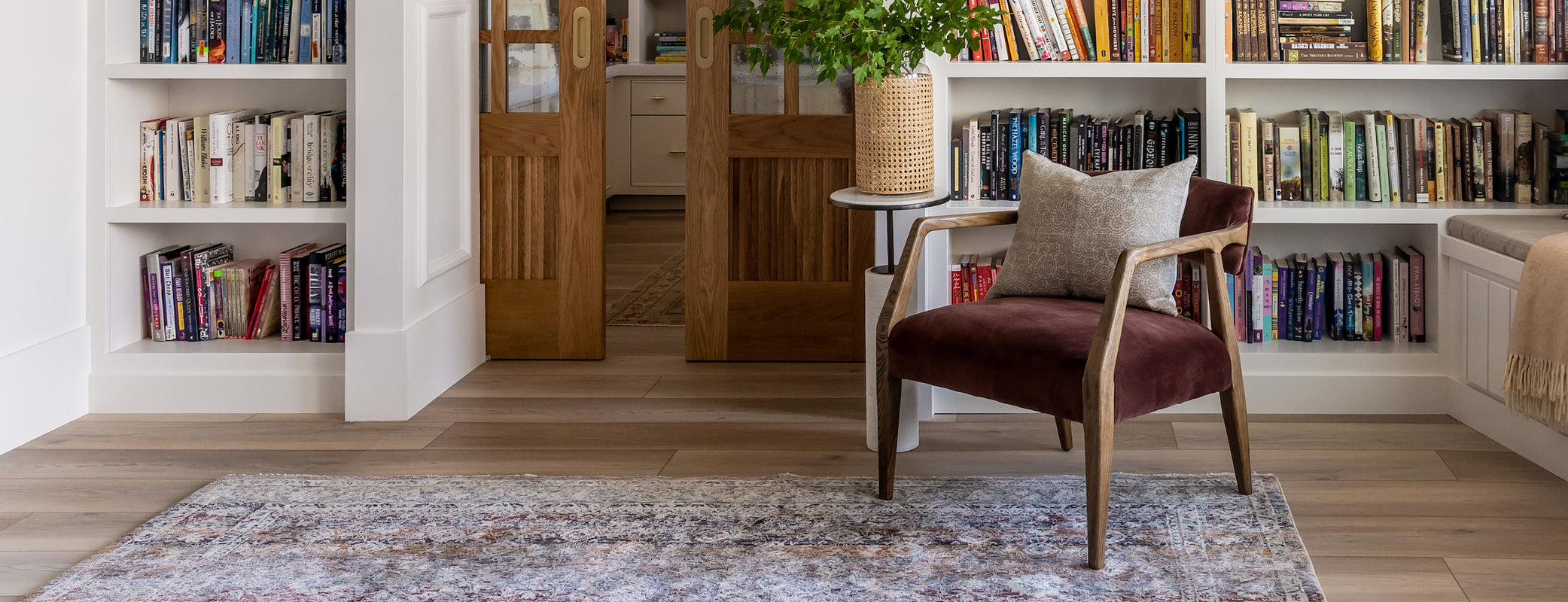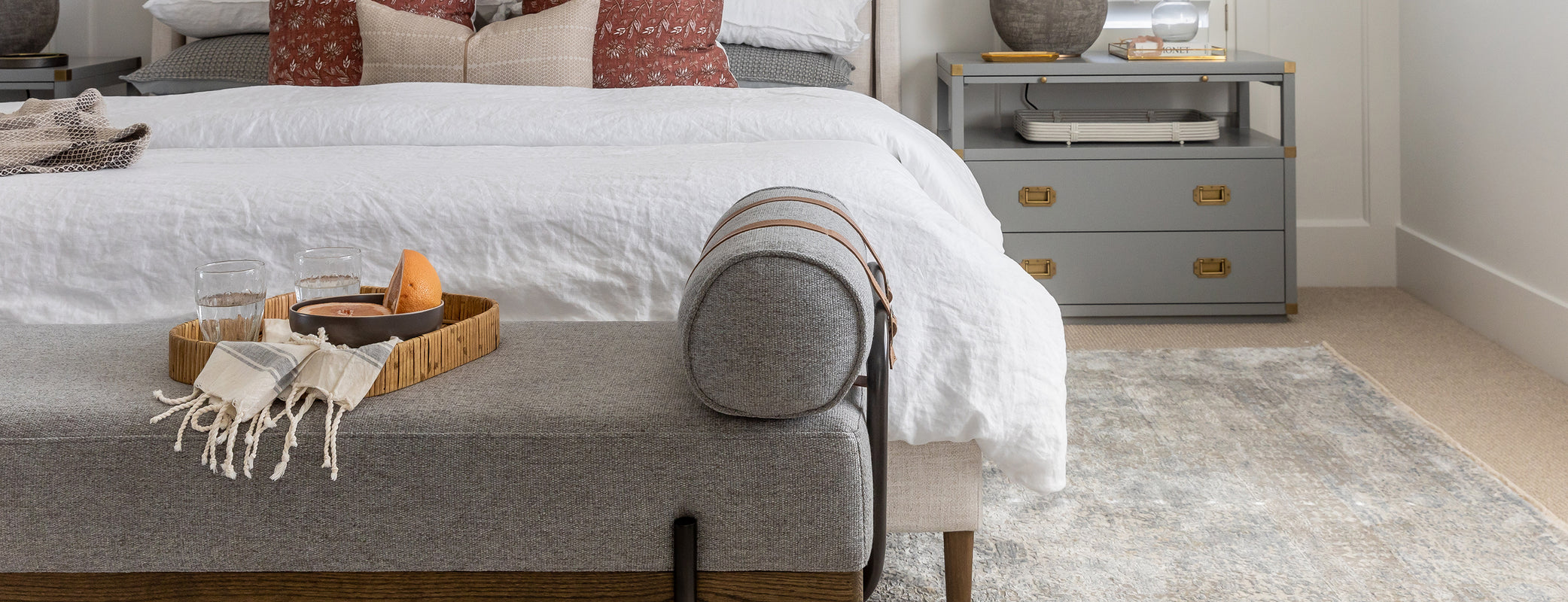the Rug Guide
Ground your space and learn how to layer, size, and care for your rugs with our useful guide.
step 01
Choose the Right Size
the Living Room
Most living rooms call for rugs that are 8x10 or 10x12. For large or open spaces, an 11x14 should do the trick.When placing sofas or chairs, make sure the front legs of each piece are on the rug.
the Bedroom
We typically recommend that bedroom rugs lay under the majority of the bed, but do not touch the nightstands. Make sure there is a decent amount of rug (at least 1 foot) showing beyond the foot of the bed.
Typical Sizes: 9x12 (King) 8x10 (Queen)
the Dining Room
We love a beautiful floor-meets-table moment, so we highly recommend skipping a rug altogether in your dining room! If you’re dying to define your dining space with a rug, we recommend getting a large enough rug that extends beyond your dining chairs.
Typical Sizes: 8x10, 9x12, 10x14
Living Room
Typical Sizes
8 x 10
10 x 12
11 x 14 for large or open spaces
Bedroom
Typical Sizes
9 x 12 (King)
8 x 10 (Queen)
Dining Room
Typical Sizes
8 x 10
10 x 12
10 x 14
step 02
Choose the Right Material
Wool
The most common material used for rugs, wool is prized for its durability and softness. Wool is strong, stain and water repellent, and has excellent insulating properties. It is also versatile, long-lasting and super cozy underfoot!
Synthetics
Synthetic rugs consist of viscose, nylon, and polypropylene. They mimic the characteristics of natural fibers. Rugs made with synthetic material are easy to clean, family-friendly, and are versatile in any indoor & outdoor environment.
Natural Fibers
Natural grasses and other fibers combine neutral, earthy palettes and rich textures, making them the ultimate design chameleons. These materials are very strong, renewable, and usually free from chemical processing.
Animal Hides
Rugs made from this material are available as complete hides, stitched panels, or woven strips of tanned leather. They are soft, durable, and easy to clean. Due to the organic nature of this material, each piece is completely unique.
Cotton
Cotton is most frequently used to make flat-weave rugs such as dhurries and kilims. Rugs from this material are generally more affordable than wool and are easy to clean, however they may wear out faster over time.
step 03
Choose the Right Construction
Handmade
Details
$$$
Intricate and Unique
Wool, Cotton, or Synthetic Materials
Ultra Durable (10-25 years)
Best For
Living rooms, offices, and bedrooms
Flatweave
Details
$$
No Pile
Wool, Cotton, or Synthetic Materials
Durable (3-10 years)
Best For
High-traffic & spill-prone areas like kitchens, entryways and playrooms.
Machine Made
Details
$$
Affordable and Easy to Clean
Synthetic Materials
Durable and Soft Underfoot
Best For
Living rooms, bedrooms, playrooms, kitchens, and bathrooms
Indoor/Outdoor
Details
$
Mold and Mildew Resistant
Synthetic Fibers Infused with UV Inhibitors
Highly Durable
Best For
Patios, outdoor dining areas, kitchens and other high traffic areas
step 04
Get a Rug Pad
for Cushioning
A rug pad adds softness to any rug and dampens noise.
for Protection
A pad under the rug prevents scratches and dye transfer to your floor or carpet below.
for Longevity
Because the rug pad acts as a buffer and prevents fibers from being crushed, it extends the life of your rug.
for Safety
A pad helps hold the rug in place and prevents slips.
for Cleanliness
It prevents the occurrence of mold, mildew, and odors by allowing more air circulation, stopping buildup of bacteria under your rug.
step 05
Care for Your Rug
Care instructions vary from rug to rug, but here's some general tips to keep in mind. For best results, always refer to the care information available for each rug.
01. Regularly Vacuum Your Rug
This will keep dirt and other particles from getting embedded in you rug's fibers. Do not vacuum with a beater bar, this can cause extra shedding or pilling to form on the surface of your rug.
02. Keep Out of Direct Sunlight
Keep your rug out of direct sunlight to prevent colors from fading. If your rug is getting too much exposure, consider adding window treatments to shade the sun and keep colors bright.
03. Rotate Your Rug
To prevent your rug from showing wear, rotate it once a year. In higher-traffic areas, rotate your rug more often so it wears evenly. If your rug has constant exposure to the sun it will fade, but occasional rotation will equalize the effects.
04. Clean Spills Immediately
Always refer to the special care information included with your rug.
05. Shake or Wash to Clean
For outdoor rugs, shake them to remove dirt, or hose them off with a garden hose. Then let them air-dry in the sun.




























